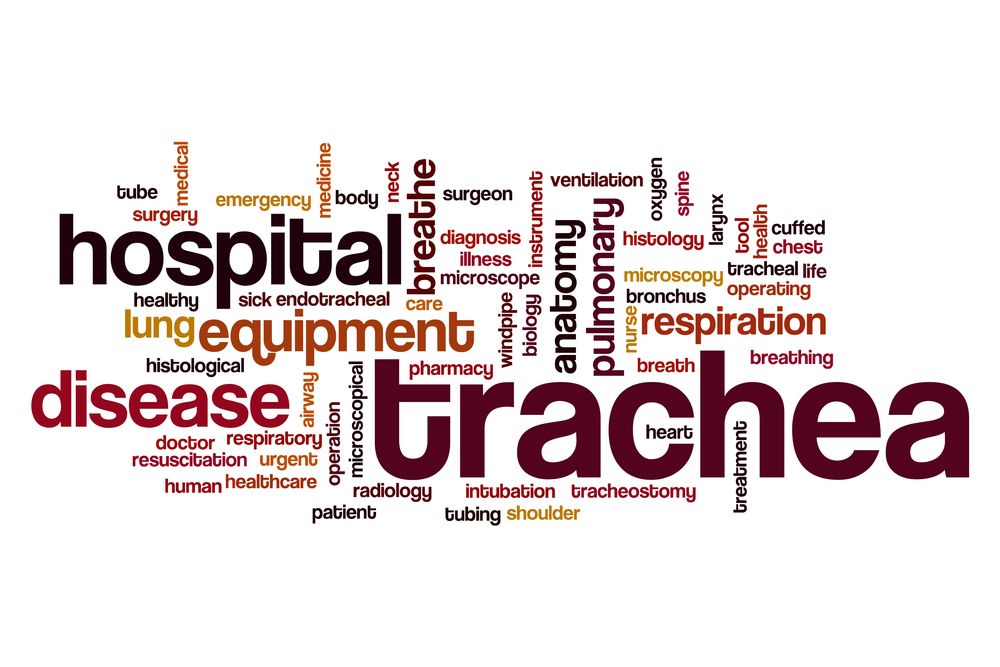A Tale of Two Takes on One Trach
Written by |

When you’ve been a “frequent flyer patient” for as long as I have, you learn how to navigate the perplexing world that is our healthcare system. For 32 years, I’ve been a prolific health care consumer (not by choice) and have seen the good, the bad and the ugly. I’ve been lucky enough to have been cared for by some of the most compassionate, skillful and empathic medical teams. I am forever grateful to these individuals, as they exemplify the best in their fields.
I’ve also had my fair share of less-than-stellar experiences. One that comes to mind occurred on Dec. 1, 2006. This was the day my husband drove through a Chicago blizzard to come take me home from the hospital. I had checked into the hospital for a scheduled C-section on April 26 of that year. What began as a post-partum infection spiraled out of control and resulted in nine additional surgeries and a 218-day hospital stay that spanned four separate facilities and healthcare systems.
The final hurrah before sending me home was to remove my trachea from my throat. Although it had been capped for several months, and I was breathing on my own, they had kept the actual trach in place in case of emergencies. I thought removing the trach was going to be some big procedure where they would knock me out, or at least give me some fun medication that relaxed me. Nope, they just yanked it out of my neck!
I stared at the gaping hole that sat where my trach had rested just moments before. I found it unbelievably creepy that when I breathed, my neck emitted a hissing sound. The nurse explained that in order for my trach wound to heal, I would need to expose it to air. This seemed bizarre and counterintuitive. I asked him if that would leave me vulnerable to infection, but he insisted that my wound would never heal if I bandaged it. I mentioned this protocol to another nurse, who thinly veiled her disapproval and told me that the hole in my neck would absolutely not heal unless I carefully dressed the wound and changed the dressing multiple times a day.
As it turned out, the second nurse’s protocol was echoed by a wound care specialist I saw shortly after I was sent home. I religiously adhered to her directions for many months. Still, my open wound refused to close. In March of 2007, after consulting with several doctors, I had a surgeon close up the wound during an in-patient procedure.
My tale of two takes on one trach is simply an illustration of how confusing medical treatment can be. As patients, the best thing we can do is self-advocate, ask questions, and find medical teams we can trust and rely upon.
I have no idea if the approach I chose has anything to do with the wound not healing. Perhaps my scleroderma was what prevented a natural closure? I’ll certainly never know for sure. Ten years later, I’m just happy I’m not walking around with a hissing neck.
***
To learn more about Lisa’s journey with scleroderma, visit: https://comfortableinmythickskin.com/
Click here to read about her 218-day hospitalization.
Note: Scleroderma News is strictly a news and information website about the disease. It does not provide medical advice, diagnosis, or treatment. This content is not intended to be a substitute for professional medical advice, diagnosis, or treatment. Always seek the advice of your physician or other qualified health provider with any questions you may have regarding a medical condition. Never disregard professional medical advice or delay in seeking it because of something you have read on this website. The opinions expressed in this column are not those of Scleroderma News, or its parent company, Bionews Services, and are intended to spark discussion about issues pertaining to scleroderma.







Leave a comment
Fill in the required fields to post. Your email address will not be published.